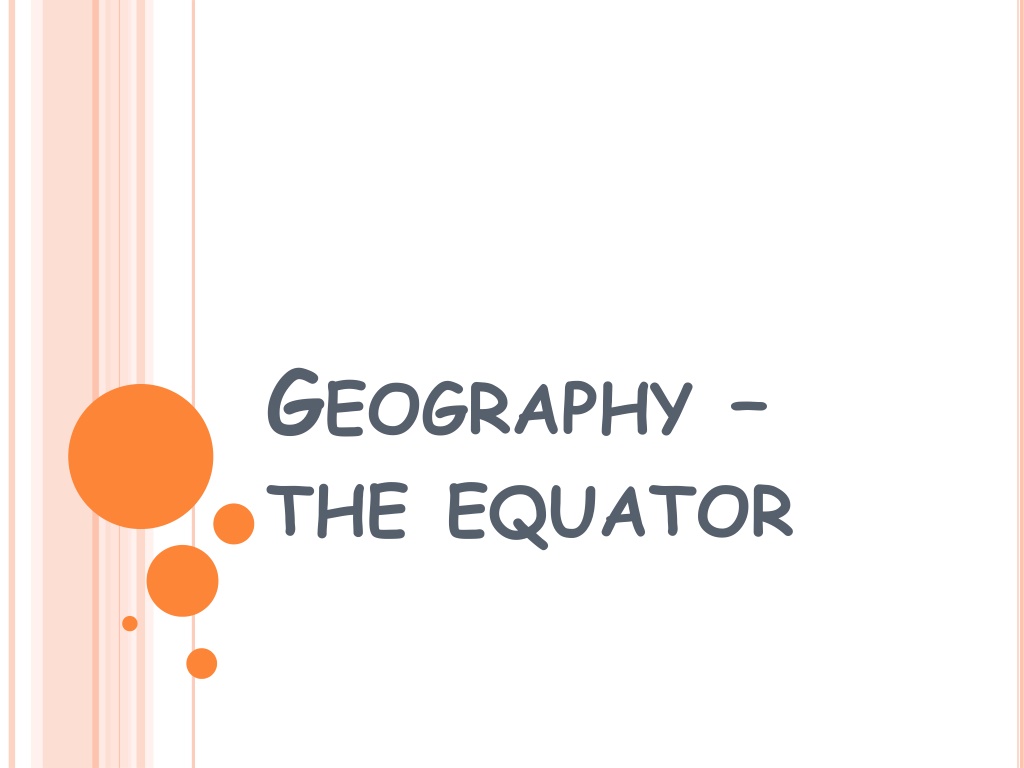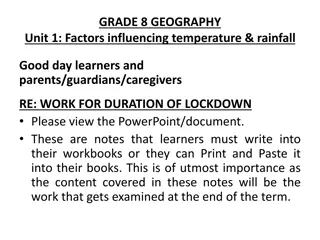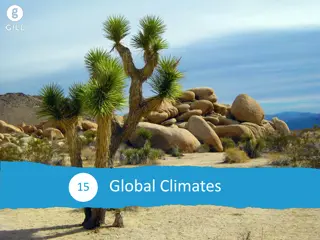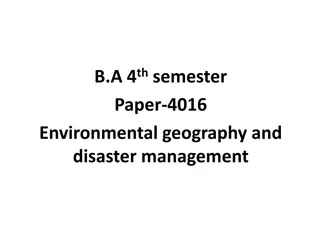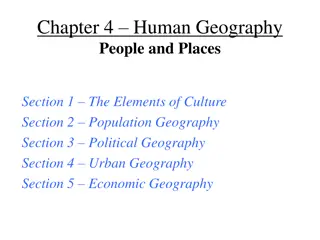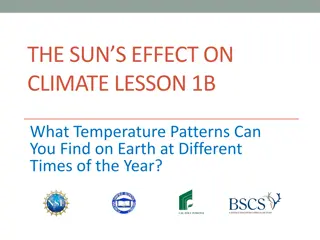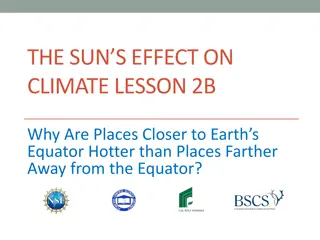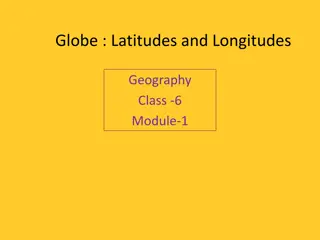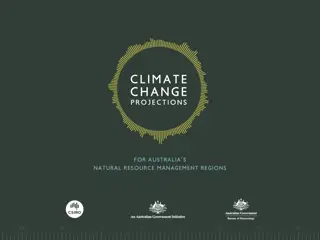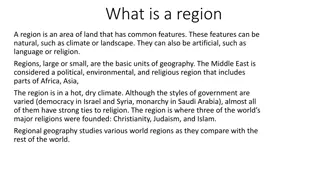Understanding the Equator and Its Impact on Climate and Geography
The Equator is an imaginary line dividing the Earth into the Northern and Southern Hemispheres. Being closest to the sun, regions near the Equator experience a tropical climate, fostering lush rainforests. Countries like Ecuador, Brazil, and Kenya lie along this significant line, influencing their hot weather and diverse wildlife. In contrast, areas far from the Equator, such as the Arctic and Antarctica, face extreme cold conditions due to their distance from this pivotal line. Learn more about how the Equator shapes our planet's climate and habitats.
Download Presentation

Please find below an Image/Link to download the presentation.
The content on the website is provided AS IS for your information and personal use only. It may not be sold, licensed, or shared on other websites without obtaining consent from the author. Download presentation by click this link. If you encounter any issues during the download, it is possible that the publisher has removed the file from their server.
E N D
Presentation Transcript
GEOGRAPHY THE EQUATOR
WHAT IS THE EQUATOR? It is an imaginary line running around the widest part of the Earth, halfway between the North Pole and the South Pole. North of the Equator, you're in the Northern Hemisphere. South of the Equator, you're in the Southern Hemisphere.
NEARTHEEQUATOR: Because of Earth's round shape, the equator is the part of the world that is always closest to the Sun, receiving its rays most directly. The weather is usually very warm around the equator, the regions are known as the Tropics. Countries close to the Equator are hot and rainy throughout the year. This is called tropical climate and is perfect for growth of rainforests. No wonder most of world s rainforests are in the countries near the equator!
NEARTHEEQUATOR The Equator passes the territory land and/or water of 14 countries. They are Ecuador, Colombia, Brazil, Gabon, Republic of the Congo, Democratic Republic of the Congo, Uganda, Kenya, Somalia, Maldives, Indonesia, Kiribati, Baker Island, Sao Tome and Principe
AFRICAANDTHEEQUATOR The equator passes through Africa. This is why the continent has many countries with hot weather. Animals such as Giraffes, Elephants, Lions and Hippos live in Africa.
FARAWAYFROMTHEEQUATOR The amount of heat received from the sun at a place on the surface of the Earth depends upon its latitude or its distance from the Equator. There is a gradual fall in temperature as we move away from the Equator towards the North and South poles. Near the Poles, the rays of the sun are slanting and spread over a large area. This makes the area near the Equator hot and the area near the Poles cold.
FAR AWAY FROM THE EQUATOR The Arctic it is near the North Pole. It includes some parts of Russia, Canada and Greenland. As it is the most northern point from the equator it is very cold. Some tribes of people such as Inuits or Eskimos live in some areas of the Arctic. Polar bears, Arctic hares, Arctic foxes and Walruses live in the there.
FAR AWAY FROM THE EQUATOR Antarctica is near the South Pole. It is a continent. As it is the most southern point from the equator it is very cold. Penguins, fur seals, Orcas and Blue whales live there. Humans do not live in Antarctica. It is the coldest, driest and windiest continent.
